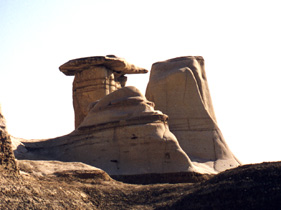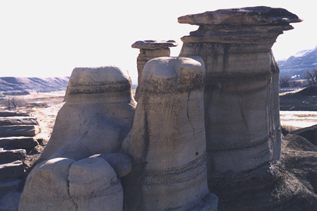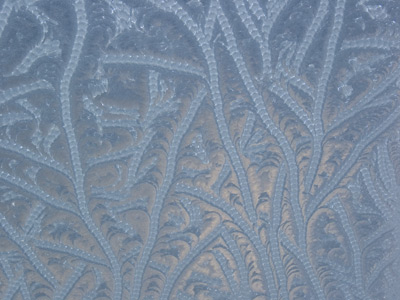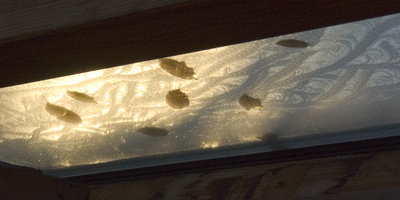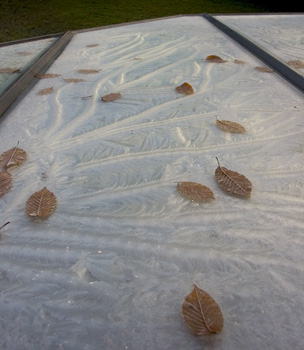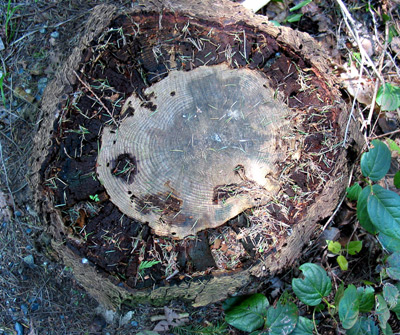first frost
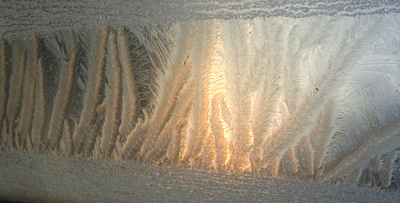
This morning on waking I was startled to see a white coat of frost everywhere! Here on the westcoast we know November is the rainiest month so it’s a visual treat whenever we have sunshine, and when we see the fresh new snow on the mountaintops, and even are blessed with some ephemeral art work on our skylights! Compare this photo to the ones I took last year on December 5th. This year’s frost pattern is different, isn’t it?
This afternoon I went around bringing in the last few potted plants, hoping that they did not get too damaged by the -2C because they were tucked against the house. Being so busy making art this fall, I’ve neglected the fall gardening jobs, which get even harder to do now with the rainy days. The dahlias need to be dug up now that the frost has blackened the tops, and I still have to plant my spring flowering bulbs. Rain is forecast again, but please Mr. Weatherman, let it be sunny next weekend, now that I will have some time at last!
